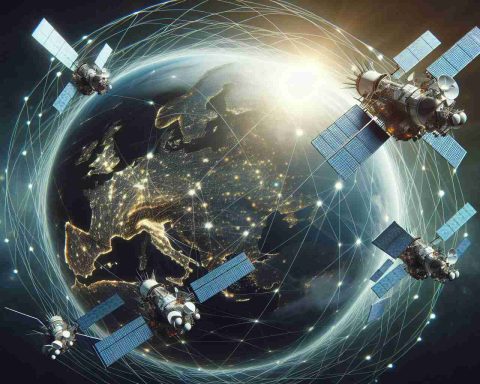Revolutionizing Remote Connectivity
In an exciting development, the European Investment Bank (EIB) has committed €30 million to Sateliot, a trailblazing Spanish startup, aimed at launching a network of over 100 small satellites. This initiative will ensure internet of things (IoT) connectivity in rural and underserved regions across the globe.
Sateliot is at the forefront of the European “New Space” industry, focusing on utilizing small satellites for communication. The company’s innovative approach involves deploying Low Earth Orbit (LEO) satellites that function like mobile telecom towers, enabling 5G-NB-IoT connectivity for upwards of 8 million devices in areas where traditional cellular networks are absent.
This financing from the EIB represents a significant stride towards enhancing space connectivity within the European Union, offering low-cost IoT monitoring services that benefit various industries, including agriculture, fisheries, and environmental protection.
With this loan, the EIB reinforces its dedication to supporting groundbreaking technologies in the European space sector. The funding, part of the InvestEU programme, aims to amplify public and private sector investments towards strategic EU objectives, including enhancing digital and space capabilities.
Sateliot’s CEO emphasized that this vital investment will accelerate the development of their next satellite constellation, marking a new era for connectivity in previously isolated areas. This partnership lays the groundwork for extending IoT networks, bridging the digital divide as we embrace a more connected future.
Unlocking Global Connectivity: Sateliot’s Satellite Revolution
Revolutionizing Remote Connectivity
The European Investment Bank’s (EIB) significant commitment of €30 million to Sateliot signals a pivotal shift in how we approach connectivity for the Internet of Things (IoT). As a pioneering Spanish startup, Sateliot is on a mission to deploy a network of over 100 small satellites designed to cater to rural and underserved areas worldwide.
# How Sateliot’s Technology Works
Using Low Earth Orbit (LEO) satellite technology, Sateliot’s approach resembles that of mobile telecom towers. This enables not just basic connectivity but high-efficiency 5G-NB-IoT connectivity, capable of serving over 8 million devices—even in regions where traditional cellular infrastructure is lacking.
# Features and Specifications
1. Satellite Network: Plans to launch over 100 LEO satellites.
2. Connectivity Type: 5G-NB-IoT, designed for IoT applications.
3. Device Capacity: Potentially services over 8 million devices.
4. Target Markets: Agriculture, fisheries, and environmental protection.
# Pros and Cons of Sateliot’s System
Pros:
– Enhanced Connectivity: Brings internet access to remote areas.
– Scalability: Supports a large number of devices simultaneously.
– Cost-Effective: Provides a low-cost alternative to traditional telecom services.
Cons:
– Initial Investment: High setup costs for satellite manufacturing and launch.
– Spatial Limitations: Coverage may not be uniform across all regions.
– Regulatory Hurdles: Operating in multiple countries may require navigating various regulations.
# Use Cases and Applications
Some promising applications for Sateliot’s satellite technology include:
– Smart Agriculture: Farmers can monitor crop conditions and optimize resource use.
– Fisheries Management: Helps track fish populations and ensures sustainable practices.
– Environmental Monitoring: Facilitates the collection of data on environmental changes.
# Market Analysis and Trends
With increasing global demand for IoT connectivity, the market for satellite communications is expected to grow significantly. Analysts project that the adoption of satellite technologies for IoT applications will become a mainstream solution, especially in areas lacking traditional infrastructure. This investment by EIB aligns with current themes of sustainability and digital inclusion in the technology sector.
# Insights and Future Predictions
Looking ahead, the partnership between EIB and Sateliot seems poised to reshape the landscape of global communications. The rapid development of their satellite constellation will likely spur innovations in various sectors, from logistics to disaster management, emphasizing the critical role of connectivity in fostering economic growth and addressing humanitarian challenges.
# Security Aspects
As with any new technology, security remains a pertinent concern. Ensuring the integrity of the data transmitted through these satellites will be crucial. Sateliot will need to implement robust security protocols to protect against cyber threats, maintain user privacy, and secure critical IoT applications.
For more information about the future of connectivity, visit Sateliot’s official website.
With the backing of the EIB and the pioneering capabilities of Sateliot, a connected future may soon become a reality for even the most isolated communities around the world.













